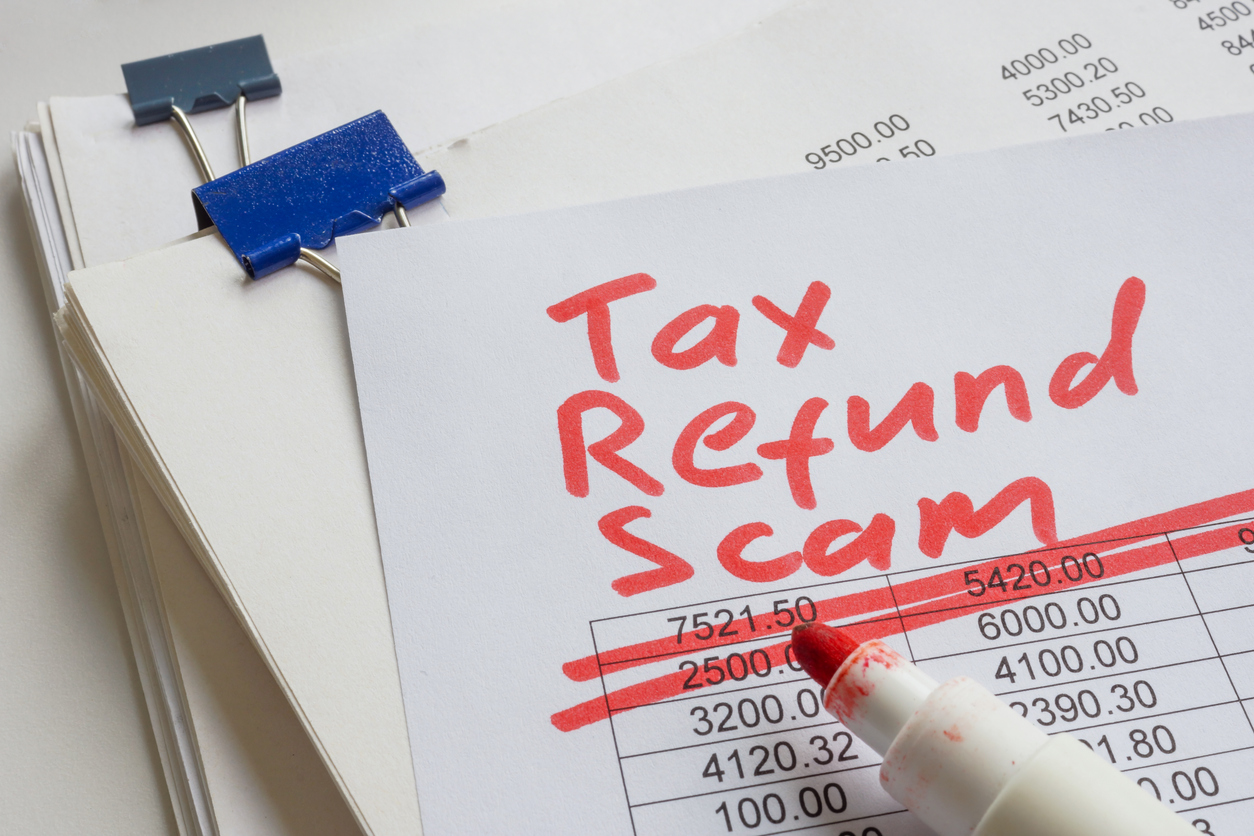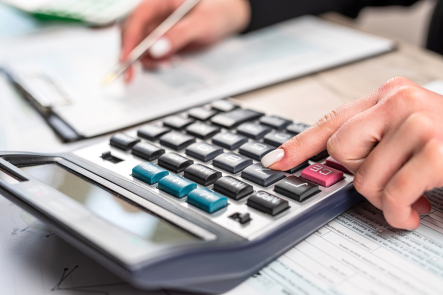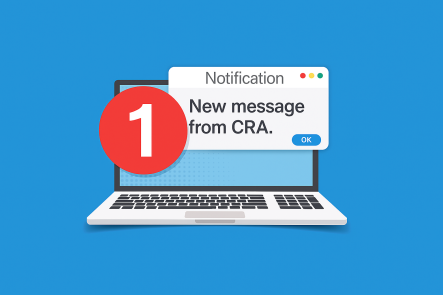Written by Eric McIntosh Champagne and Casey Murray.
Tax fraud is becoming increasingly sophisticated, with scammers targeting unsuspecting taxpayers. Among the most damaging schemes are those involving false tax filings to claim fraudulent refunds. To protect yourself, it is important to be aware of these scams, know how to spot the warning signs and the actions you can take to protect yourself, and know what to do if you suspect fraud has occurred.
The Growing Threat of False Tax Filings
One of the most alarming scams involves fraudsters filing false tax returns using stolen personal information, such as your Social Insurance Number (SIN). Here’s how these scams typically work:
Identity Theft
- Scammers steal personal information through phishing emails, data breaches, or other means
- This information is used to access your CRA account or create a fake account in your name
- Once inside your CRA account, scammers change your direct deposit information, so refunds are sent to their accounts instead of yours
Early Tax Slip Fraud
- Once inside your CRA account, scammers look for tax slips posted early in the year (e.g., government benefits or pension income) that include significant tax withholdings
- Using this partial information, they file a tax return on your behalf before all your other income slips are available
- The CRA’s system processes the return based on the early tax slips and doesn’t recognize that additional slips (like employment or investment income) are missing
- The CRA issues a refund based on incomplete information, and the money is sent to a bank account controlled by the scammer
Fake Tax Slips Fraud
- Fraudsters generate fake T4 or T4A slips claiming income and deductions that never occurred
- These slips are submitted with a fraudulent tax return to claim refunds
Consequences for Taxpayers
In some cases, victims of these scams are wrongly blamed for filing fraudulent returns and can face wage garnishments or penalties until the fraud is resolved. In addition, legitimate tax refunds and other benefits can be impacted. Beyond the financial impact, it can take years to completely resolve these issues with CRA.
How to Protect Yourself
Protecting yourself from false tax filings requires vigilance and proactive measures:
1. Secure and Monitor Your CRA Account
Regularly log in to your My Account portal to monitor activity. Use strong passwords and enable email notifications for changes made to your account.
Ensure you have added multi-factor authentication to your existing My Account. Click for detailed instructions. New My Accounts will require multi-factor authentication during the account set-up process.
Watch for unexpected changes in your account, including changes to your mailing address, bank or direct deposit information, or your authorized representative. In addition, monitor your benefit applications to ensure there are no new applications or changes to your existing benefits.
For additional security, you can create a Personal Identification Number (PIN) that can be used to confirm your identity when speaking with CRA.
2. Verify Communications from CRA
CRA does not request personal information or payments via text or email. Some of these messages can look authentic, make use of your personal information and SIN number, and appear to come from legitimate CRA email addresses or phone numbers.
You may receive a legitimate email from CRA informing you that there is a message for you in your CRA My Account; the email will not contain the message. From your browser (not the email), login to your account to retrieve the message.
CRA will only text you with a code as part of the multi-factor authentication process for logging in to your My Account.
It is possible that CRA will call you. If you do receive a call, ask for the caller’s name, office location and call-back telephone number. You can then verify the number on this government of Canada web page. Do not provide any personal information when you receive the initial call.
What To Do If You Suspect Fraud
If you see any unusual or suspicious activity on our CRA account, please inform your GGFL partner immediately. There is a one-to-two-week delay between filing a tax return and CRA completing the assessment and issuing any tax refund. With timely intervention, scams can be brought to CRA’s attention before a tax refund is sent to the scammers.
Additional steps that can be taken include:
– Contacting the CRA at 1-800-959-8281 or reporting the incident online.
– Submitting Form RC213 (Identity Theft Declaration) to the CRA if your identity has been compromised.
– Notifying the Canadian Anti-Fraud Centre at 1-888-495-8501.
Protect Your Accounts
If your CRA account has been compromised, change the password immediately for this and other online accounts. Carefully monitor your banking accounts and credit reports for unusual activity.
Resources for Further Guidance
For more information on protecting yourself from tax scams, visit the scams and fraud resource page on the government of Canada website.
Tax fraud can be costly and stressful, but with awareness and preventative measures, you can safeguard yourself against these threats. If you have any concerns about your taxes or suspect fraudulent activity, please contact our office—we’re here to help!
Click here for 11 Steps to Prevent Business Fraud.







